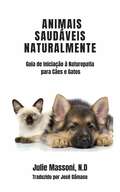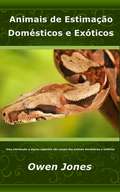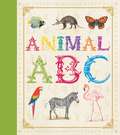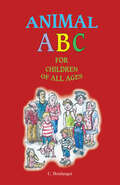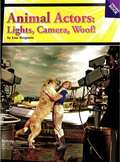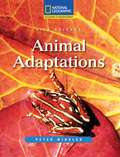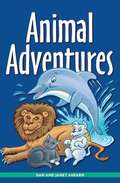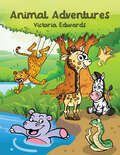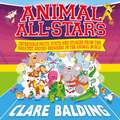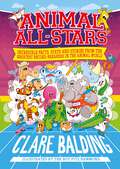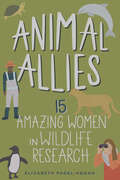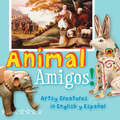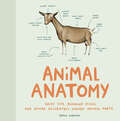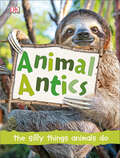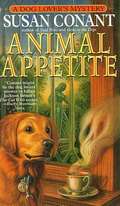- Table View
- List View
Anima: A Wild Pastoral
by Kapka KassabovaIn Anima, Kapka Kassabova introduces us to the “pastiri” people—the shepherds struggling to hold on to an ancient way of life in which humans and animals exist in profound interdependence. Following her three previous books set in the Balkans, and with an increasinging interest in the degraded state of our planet and culture, Kassabova reaches further into the spirit of place than she ever has before. In this extraordinary portrayal of pastoral life, she investigates the heroic efforts to sustain the oldest surviving breeds of our domesticated animals, and she shows us the epic, orchestrated activity of transhumance—the seasonal movement, on foot, of a vast herd of sheep, working in tandem with dogs. She also becomes more and more attuned to the isolation and sacrifices inherent in the lives shaped by this work.Weaving together lyrical writing about place with a sweeping sense of the traumatic histories that have shaped this mountainous region of Bulgaria, Kassabova shows how environmental change and industrial capitalism are endangering older, sustainable ways of living, and by extension she reveals the limited nature of so much of modern life. But shining through Kassabova’s passionate, intimate response to the monoculture that is “Anthropos” is her indelible portrait of a circulating interdependence of people and animals that might point to a healthier way to live.
Animais Saudáveis Naturalmente Guia de Iniciação à Naturopatia para Cães e Gatos
by Julie MassoniSinopse Animais Saudáveis Naturalmente é um guia introdutório à naturopatia para cães e gatos e inclui informações sobre dieta natural, suplementos nutricionais para melhorar a sua saúde dos animais, juntamente com informações sobre o uso de ervas, homeopatia e essências florais para ajudar na saúde e no bem-estar. Alternativas naturais para pulgas, desparasitação, antibióticos e alívio da dor. Também inclui informações sobre a alimentação e de uma dieta vegetariana para cães. Escrito por um naturopata de animais qualificado, que tem ajudado milhares de animais com uma série de questões de saúde agudas e crónicas. Se gostaria de saber mais sobre como usar terapias naturais e como evitar muitos problemas de saúde, então, este livro é uma grande referência.
Animais de Estimação Domésticos e Exóticos: Uma introdução a alguns aspectos não usuais dos animais domésticos e exóticos (Como se faz... #31)
by Owen JonesAnimais de Estimação Domésticos e Exóticos Uma introdução a alguns aspectos não usuais dos animais domésticos e exóticos Espero que você ache estas informações relevantes, úteis e valiosas. As informações neste e-book, sobre vários aspectos de animais de estimação exóticos ou não, estão organizadas em 17 capítulos de aproximadamente 500-600 palavras cada. Espero que isto desperte o interesse em quem ama os animais. Como bônus, estou lhe dando a permissão para que use este conteúdo em seu próprio website ou em seu próprio blog ou newsletter, apesar de ser melhor que você o reescreva primeiro com suas próprias palavras. Você também pode dividir este livro e revender os artigos. Na verdade, o único direito que você não tem é revender ou jogar fora um livro que foi dado a você.
Animal ABC
by Susi MartinAn introduction to the alphabet and the animal kingdom. This charming book introduces children to every letter in the alphabet. Beautiful watercolor illustrations on every page will engage and delight children, with a variety of animals for children to spot, from aardvarks and alligators to zebras. Children love animals and take pride in identifying them. Animal ABC is sure to engage young minds.
Animal ABC for Children of All Ages
by C. BoulangerWhen COVID-19 lockdowns swept the globe, creativity unlocked for one woman in Belleville, Ontario. Alone with her cat, C. Boulanger turned to a fantasy world she had long imagined, bringing to life a charming children&’s tale. With whimsical animals as guides straight from her isolation, she penned Animal ABC for Children of All Ages not just to delight young readers, but to remind all of us that even in the darkest of days, joy and wonder still exist if only we know where to look. Brighten your family&’s time at home with this playful journey of imagination.Cover designed by Janet Eastwood.
Animal Abuse
by Catherine TipladyAnimal abuse affects everybody working in animal-related industries, and constitutes a significant part of veterinary caseloads and animal shelter work. Based on the author's experience as a shelter worker and veterinarian, this book provides advice and assistance to those working with animal abuse. Beginning with definitions and types of abuse that occur worldwide in domestic, industry, leisure and cultural settings, the book goes on to detail current topics of debate such as foie gras production, pedigree dog breeding, links between animal abuse and domestic violence, and the fascinating subject of veterinary forensics - the scientific investigation of instances of animal abuse. The book's practical focus is developed through interviews with people in a variety of affected roles, international case studies, and discussion of the difficulties that arise; how they can be dealt with and the mental health impacts they can have on those involved. With contributions from world-renowned experts including Phil Arkow and David Bailey, and an introduction by Clive Phillips, Animal Abuse: Helping Animals and People provides practical advice and insights into issues surrounding this emotional subject.
Animal Abuse: Helping Animals and People
by Catherine TipladyAnimal abuse affects everybody working in animal-related industries, and constitutes a significant part of veterinary caseloads and animal shelter work. Based on the author's experience as a shelter worker and veterinarian, this book provides advice and assistance to those working with animal abuse. Beginning with definitions and types of abuse that occur worldwide in domestic, industry, leisure and cultural settings, the book goes on to detail current topics of debate such as foie gras production, pedigree dog breeding, links between animal abuse and domestic violence, and the fascinating subject of veterinary forensics - the scientific investigation of instances of animal abuse. The book's practical focus is developed through interviews with people in a variety of affected roles, international case studies, and discussion of the difficulties that arise; how they can be dealt with and the mental health impacts they can have on those involved. With contributions from world-renowned experts including Phil Arkow and David Bailey, and an introduction by Clive Phillips, Animal Abuse: Helping Animals and People provides practical advice and insights into issues surrounding this emotional subject.
Animal Actors: Lights, Camera Wolf! / Animals in Film: Cruelty on Camera (Fountas & Pinnell LLI Purple #Level W)
by Lisa BenjaminTWO WAY BOOK Animal Actors Lights Camera Wolf! & Animals in Film Cruelty on Camera by Lisa Benjamin
Animal Acts: Performing Species Today
by Holly Hughes Una ChaudhuriWe all have an animal story--the pet we loved, the wild animal that captured our childhood imagination, the deer the neighbor hit while driving. While scientific breakthroughs in animal cognition, the effects of global climate change and dwindling animal habitats, and the exploding interdisciplinary field of animal studies have complicated things, such stories remain a part of how we tell the story of being human. Animal Acts collects eleven exciting, provocative, and moving stories by solo performers, accompanied by commentary that places the works in a broader context. Work by leading theater artists Holly Hughes, Rachel Rosenthal, Deke Weaver, Carmelita Tropicana, and others joins commentary by major scholars including Donna Haraway, Jane Desmond, Jill Dolan, and Nigel Rothfels. Una Chaudhuri's introduction provides a vital foundation for understanding and appreciating the intersection of animal studies and performance. The anthology foregrounds questions of race, gender, sexuality, class, nation, and other issues central to the human project within the discourse of the "post human," and will appeal to readers interested in solo performance, animal studies, gender studies, performance studies, and environmental studies.
Animal Adaptations
by Peter WinklerThe brownish-whitish fish can't outsiwm most predators. It doesn't even try. Instead the porcupine fish does something odd. It gulps water--mouthful after frantic mouthful. As the fish drinks, its skin stretches and stretches.
Animal Adventure Stories (Bumper Short Story Collections #95)
by Enid BlytonMeet the cat who went to see the Queen, the bird who loves shiny things and the horse that turned into a pig. This collection of short stories by Enid Blyton is filled with exciting animals ready for adventure! Will you join them?These traditional tales are ideal for younger children being read to and for newly confident readers to read alone. Each story stands alone and is the perfect length for reading at bedtime or in the classroom.Enid Blyton remains one of Britain's favourite children's authors and her bumper short story collections are perfect for introducing her to the latest generation of readers.Read all of Enid Blyton's bumper short story collections. New in 2025:Sleepytime StoriesFive-Minute Magic StoriesChristmas Bedtime Stories***Enid Blyton® and Enid Blyton's signature are registered trade marks of Hodder & Stoughton Limited. No trade mark or copyrighted material may be reproduced without the express written permission of the trade mark and copyright owner.
Animal Adventure Stories (Bumper Short Story Collections #95)
by Enid BlytonMeet the cat who went to see the Queen, the bird who loves shiny things and the horse that turned into a pig. This collection of short stories by Enid Blyton is filled with exciting animals ready for adventure! Will you join them?These traditional tales are ideal for younger children being read to and for newly confident readers to read alone. Each story stands alone and is the perfect length for reading at bedtime or in the classroom.Enid Blyton remains one of Britain's favourite children's authors and her bumper short story collections are perfect for introducing her to the latest generation of readers.Read all of Enid Blyton's bumper short story collections. New in 2025:Sleepytime StoriesFive-Minute Magic StoriesChristmas Bedtime Stories***Enid Blyton® and Enid Blyton's signature are registered trade marks of Hodder & Stoughton Limited. No trade mark or copyrighted material may be reproduced without the express written permission of the trade mark and copyright owner.
Animal Adventures
by Alison Adams Dan Ahearn Janet Ahearn Peter FasolinoFind out about amazing animals that made a difference in the lives of young people.
Animal Adventures
by K12A collection of animal adventure stories: The Day the Gulls Went Crazy, The Think Tank, Are Dogs Dumb? and Close Encounters of the Bear Kind
Animal Adventures
by Victoria EdwardsCome and join the young African animals on their fun adventures, from Rodney the Rhino’s first day at school to Larry the Lion Cub’s day full of surprises. Animal Adventures is a collection of seven short stories written by a qualified counsellor and psychotherapist containing life lessons that parents will enjoy just as much as their children.
Animal All-Stars: Incredible Facts, Stats and Stories from the Animal Kingdom
by Clare BaldingWho would win in a slow sprint, the Australian Tiger Beetle or the American falcon?Is the sperm whale built to be a great long-distance swimmer or is perseverance her winning attribute?What would a tiger look like in a bikini? Find out all of this and more in the Animal Games, a competition like no other, where the world's most fascinating animals go head to head to become champions in their field.Full of fascinating and surprising facts, hilarious illustrations and motivational takeaways that show even the most understated animals have hidden skills, you can't always judge something by its appearance, and that there is great power in being the underdog.You'll discover TRUE animal facts, skills, tricks and world-records - and imagine what would happen if animals from around the world could compete in the most entertaining sports day ever...
Animal All-Stars: Incredible Facts, Stats and Stories from the Animal Kingdom
by Clare BaldingA HILARIOUS GUIDE TO THE ANIMAL KINGDOM WHERE YOUR FAVOURITE ANIMALS GO HEAD-TO-HEAD - BY BESTSELLING AUTHOR AND COMMENTATOR, CLARE BALDINGWho would win in a race... the Australian tiger beetle or the peregrine falcon?Who is the strongest... the extraordinary ant or the grumpy gorilla?Who has the best superpower... the headless cockroach or the jet-powered squid?From speed, agility and strength to hidden skills, such as problem-solving, endurance and super-sensory prowess, witness these Animal All-Stars compete to become champions in their field. Full of incredible true animal facts, stats and world records, this is a funny, rip-roaring guide to the world's most fascinating animals. Let the Games begin!The perfect gift for kids who love animals and sport. With laugh-out-loud commentary and incredible animal facts throughout, and rib-tickling illustrations by The Boy Fitz Hammond.
Animal Allies: 15 Amazing Women in Wildlife Research (Women of Power #4)
by Elizabeth Pagel-HoganThese 15 women work with animals on land, air, and sea. Corina Newsome is saving seaside sparrows while Michelle LaRue uses satellites to study Antarctic birds. Lizzy Lowe takes on what many fear in researching spiders, and Erin Ashe lives out the dream of many studying dolphins and whales. Kristen Hecht chases the elusive hellbender amphibian while EnikÖ Kubinyi uses robots to get information on wolf pups. These women are working on issues that intersect with biodiversity, species conservation, biology, and more. They stand out for their work in their fields and are also dedicated to science communication to share their knowledge with others. They challenge the assumptions of who a scientist is and what a scientist looks like.These diverse, modern women are pushing the boundaries of their scientific fields while empowering others to pursue their dreams.
Animal Amigos!
by San Antonio Museum of ArtWhat better way to learn animal names than with eye-catching works of art. With work from across Latin America and beyond, children will become armchair world travelers and art connoisseurs. This bilingual edition introduces early readers, and earlier listeners, to animals in both English and Spanish.
Animal Anatomy: Sniff Tips, Running Sticks, and Other Accurately Named Animal Parts
by Sophie CorriganSophie Corrigan evokes everyone's inner zoologist in this charmingly illustrated and wittily worded menagerie. Each critter featured in this fun book is tagged with totally fictitious yet comically accurate anatomical labels, from a tree frog's "clingy jazz hands" and a raccoon's "sneaky bandito mask" to a velociraptor's "disembowly prowlies" and many more. Rife with animal puns, eye-catching bonus art, interesting animal facts, and laugh-out-loud labels that beg to be shared, Animal Anatomy will bring smiles to animal lovers of all ages.
Animal Anatomy: Sniff Tips, Running Sticks, and Other Accurately Named Animal Parts
by Sophie CorriganSophie Corrigan evokes everyone's inner zoologist in this charmingly illustrated and wittily worded menagerie. Each critter featured in this fun book is tagged with totally fictitious yet comically accurate anatomical labels, from a tree frog's "clingy jazz hands" and a raccoon's "sneaky bandito mask" to a velociraptor's "disembowly prowlies" and many more. Rife with animal puns, eye-catching bonus art, interesting animal facts, and laugh-out-loud labels that beg to be shared, Animal Anatomy will bring smiles to animal lovers of all ages.
Animal Antics
by DKHave you ever wondered how ants carry up to 50 times their body weight? Or why sloths move so slowly? Discover the answers to these questions and more as you laugh along at the hilarious pictures in this fun non-fiction book for kids.Animal Antics is jam-packed with funny photos of animals in action. Look out for goats popping up in unexpected places, zebras and chimpanzees grinning for the camera, and adorable chipmunks with bulging cheeks. Alongside high quality images, each page features mind-boggling facts about your favourite animals, including how they get around, what they like to eat, and how they stay cool or keep warm.Children will love this fresh glimpse into the lives of loads of weird and wonderful animals.
Animal Appetite
by Susan ConantDog's Life columnist Holly Winter sinks her teeth (and those of her two beloved Malamutes, Rowdy and Kimi) into two mysteries. Can they muzzle the killer before he attacks again?
Animal Architects (Readers)
by Libby RomeroIndependent readers will learn all about nature's most amazing builders in this new leveled reader from National Geographic Kids.Ever wondered why beavers build dams? Or how spiders weave their intricate webs? In this reader, you'll meet brilliant birds, inventive insects, and amazing mammals that all share a special skill. Packed with beautiful and engaging photos, this leveled reader introduces kids to the most extreme engineers of the animal kingdom.National Geographic Readers' expert-vetted text, along with brilliant images and a fun approach to reading, has proved to be a winning formula with kids, parents, and educators. Level 2 text provides accessible, yet wide-ranging, information for kids ready to read on their own, perfect to encourage the engineers and explorers of tomorrow!

